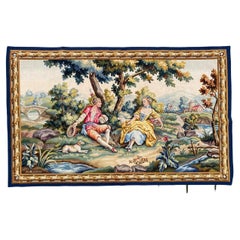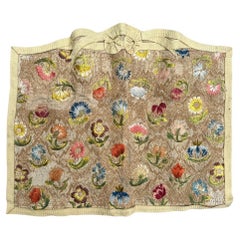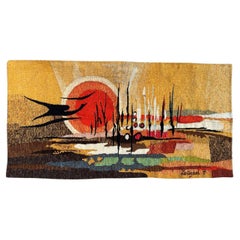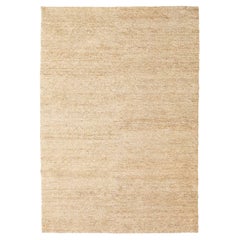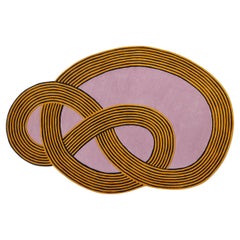European Western European Rugs
to
896
Width
to
Length
to
3,148
1,642
61
555
367
281
131
109
36
31
25
11
10
9
9
8
7
6
5
3
217
621
2,310
1,703
588
1,188
462
70
47
123
92
66
120
166
148
63
79
4,696
4,245
882
481
109
2,415
2,376
4,851
3,762
4,022
4,851
2,892
2,144
1,770
1,357
103
66
53
42
40
Place of Origin: European
Bobyrug’s Pretty Vintage French Aubusson Tapestry
Located in Saint Ouen, FR
Very beautiful mid century french Aubusson tapestry with beautiful gallant design and beautiful colors, entirely hand woven at Aubusson manu...
Category
Mid-20th Century Aubusson European Western European Rugs
Materials
Wool, Silk
1970's Romanian Oltenian Kilim Rug with Traditional Style
Located in Dallas, TX
78013 Vintage Romanian Oltenian Kilim Rug, 08'02 x 12'01. Radiating the vibrant spirit of Romanian folk artistry, this handwoven wool vintage Oltenian kilim rug is a joyous celebrati...
Category
Late 20th Century Kilim European Western European Rugs
Materials
Wool
$3,472 Sale Price
20% Off
Pretty antique Hungarian embroidery tissue
Located in Saint Ouen, FR
Beautiful antique hungarian embroidered tissue fragment , with beautiful designs of flowers and with nice natural colours, entirely hand embroide...
Category
Early 19th Century Aubusson Antique European Western European Rugs
Materials
Silk
Nice modern French Aubusson Tapestry by « Lartigaud »
Located in Saint Ouen, FR
Discover the elegance of modern French tapestry with the exquisite design by Jean Michel Lartigaud. This limited edition masterpiece, woven in vibrant shades of orange, yellow, red, ...
Category
Mid-20th Century Modern European Western European Rugs
Materials
Wool, Cotton, Silk
$4,706 Sale Price
20% Off
Ariadna Miquel and Nani Marquina 'Earth' Rug in Jute 170 x 240cm in Cream
By Nanimarquina
Located in Tilburg, NL
Ariadna Miquel and Nani Marquina 'Earth' Rug in Jute. New, current production.
Created with jute, this hand-knotted rug with tight loops evokes the textures of the Earth, appealing ...
Category
21st Century and Contemporary Modern European Western European Rugs
Materials
Jute
Patricia Urquiola Rigadino Large Rug by Cassina
By Cassina, Patricia Urquiola
Located in Barcelona, Barcelona
Patricia Urquiola Rigadino Large Rug
Manufactured by Cassina
NONCONFORMIST ELEGANCE
With Rigadino, Patricia Urquiola designs a contribution of nonconformist elegance inspired by h...
Category
2010s Mid-Century Modern European Western European Rugs
Materials
Wool
$10,337 / item
Doris Leslie Blau Antique French Aubusson Rug
Located in New York, NY
Antique French Aubusson Rug
Size: 11'2" × 12'6" (340 × 381 cm)
Steeped in the elegance of the French Belle Époque, this exquisite Aubusson rug from circa 1900 is a prime example of t...
Category
Early 20th Century Aubusson European Western European Rugs
Materials
Wool
Pretty Vintage Aubusson Style Jacquard Tapestry
Located in Saint Ouen, FR
Beautiful vintage French Aubusson style tapestry with a nice design . and with beautiful colours, entirely woven with wool And cotton on Jacquard looms
✨✨✨
"Experience the epitome o...
Category
Mid-20th Century Aubusson European Western European Rugs
Materials
Wool, Cotton
$897 Sale Price
20% Off
Pretty 20th century modern french Aubusson tapestry by « Claude Picard »
Located in Saint Ouen, FR
Very beautiful 20th century Aubusson tapestry with a modern design by french painter « Claude Picard », representing a rooster and three birds among the ...
Category
1970s Aubusson Vintage European Western European Rugs
Materials
Wool, Cotton
$1,701 Sale Price
20% Off
Antique English Needlepoint Rug with Colorful Floral Medallions
Located in Long Island City, NY
Handwoven in wool and originating from England circa 1850-1860, this 6x8 antique needlepoint rug is a rare and exciting new curation from our European rug collection.
On the Design...
Category
1890s Antique European Western European Rugs
Materials
Wool
Swedish Mid-Century Rölakan Rug Handwoven Wool Carpet
Located in Haddonfield, NJ
A Mid-Century Modern vintage handmade Swedish carpet in wool featuring a geometric pattern. This blueish colored Scandinavian rug dates between 1950 and 1970. The tradition of qualit...
Category
1960s Scandinavian Modern Vintage European Western European Rugs
Materials
Wool
Handmade Vintage Floral Green Transitional Art & Crafts Wool Rug
Located in Norwalk, CT
This exquisite wool rug showcases the timeless beauty of the Art & Crafts style, boasting a rich brownfield and a delicate floral pattern with yellow and green accents framed by a su...
Category
1990s Arts and Crafts European Western European Rugs
Materials
Wool
Contemporary Handmade Spanish Arts & Crafts Cuenca Room Size Carpet
Located in New York, NY
A modern Spanish Cuenca room size carpet handmade during the 21st century in the style of the Arts & Crafts movement famous during the turn of the 20th century.
Measures: 10' 0" x...
Category
21st Century and Contemporary Arts and Crafts European Western European Rugs
Materials
Wool
$4,900 Sale Price
20% Off
Handmade Vintage Persian Kashan Rug 8.1' x 11.4' 1940s - 2K38
Located in Bordeaux, FR
A Legacy of Persian Artistry
This handmade vintage Persian Kashan rug, dating from the 1940s, is a magnificent testament to centuries of refined carpet weaving traditions. Kashan rug...
Category
1940s Vintage European Western European Rugs
Materials
Wool
Missoni Post-Modern Wool Rug, 1980s, Italy, Signed
By Missoni Home, Missoni
Located in Los Angeles, CA
Attention interior designers, this is the rug you need for that high-profile cover-worthy room you're working on. This signed Missoni rug is from the 1980s Italy and in an oh-so-on-t...
Category
1980s Post-Modern Vintage European Western European Rugs
Materials
Wool
$7,840 Sale Price
20% Off
Late 17th Century Flemish Mythological Tapestry
Located in New York, NY
A Flemish (possibly Antwerp) mythological tapestry from the “Story of Achilles” series, woven in the second half of the 17th century, envisioning a scene in which Achilles’ mother, T...
Category
17th Century Antique European Western European Rugs
Materials
Wool
$47,995 Sale Price
40% Off
Selce #2 Rug By Studio Salaris
By Carpet Edition
Located in Milan, IT
Designed by Studio Solaris, this unique rug is part of the Selce Collection, inspired by the irregular silhouette of flint ("selce" in Italian). Entirely crafted by hand using a comb...
Category
2010s European Western European Rugs
Materials
Textile
$10,804 / item
Early 18th century Flemish antique tapestry 10x13 Verdure Wool & Silk 297x384cm
Located in New York, NY
Early 18th Century Antique Flemish Tapestry Fine Verdure Wool & Silk
9'9" x 12'7"(10x13) 297cm x 384cm
Circa 1720
"This is a very fine Authentic Antique Flemish wool & silk Tapest...
Category
Early 18th Century Baroque Antique European Western European Rugs
Materials
Wool, Silk
$17,600 Sale Price
44% Off
Homage Preparedness Rug by Josef Albers
By Josef Albers
Located in Jersey City, NJ
100% wool rug
hand-dyed and hand-tufted
5'9" x 5'9" (1.75 meters x 1.75 meters)
printed tag showing edition details and signature
edition of 100
Produced in association with the Jos...
Category
2010s European Western European Rugs
Materials
Wool
$1,450 / item
Bobyrug’s Beautiful French Aubusson Style Jaquar Tapestry
Located in Saint Ouen, FR
Elevate your space with a charming French tapestry featuring a gallant village scene. Woven with precision on Jacquard looms in France, this masterpiece showcases couples by the rive...
Category
Mid-20th Century Aubusson European Western European Rugs
Materials
Wool, Cotton
$1,496 Sale Price
20% Off
Decorative Vintage Tapestry Pillow, Louis XV Hunting - II Francois Boucher
Located in Dallas, TX
78620 Decorative Vintage Tapestry Pillow, 01'05 x 01'05.
Emanating timeless style of Louis XV with incredible detail and texture, this decorative vintage tapestry pillow is a captiv...
Category
Mid-20th Century Louis XV European Western European Rugs
Materials
Wool
$119 Sale Price
20% Off
Antique English Garden Needlepoint Runner with Baroque Floral Chintz Style
By Mario Buatta
Located in Dallas, TX
73615 antique English Garden needlepoint runner with Baroque Floral Chintz style. Drawing inspiration from Mario Buatta with romantic sensibility, this la...
Category
Late 19th Century Baroque Antique European Western European Rugs
Materials
Wool
$7,999 Sale Price
20% Off
Nice vintage French Aubusson Style Panel Jacquard Tapestry
Located in Saint Ouen, FR
"Exquisite French tapestry from the late 20th century, featuring a beautiful floral design of titled Fontainebleau Lys, and nice colours, woven at renowned workshops in jacquard loom...
Category
Late 20th Century Aubusson European Western European Rugs
Materials
Wool, Cotton, Acrylic
$1,122 Sale Price
20% Off
Zabihi Collection 19th Century Antique French Aubusson Pillow
Located in New York, NY
Authentic stand-alone pillow made from a 19th century French Aubusson rug
Measures: 18" x 18",
Category
Early 19th Century Aubusson Antique European Western European Rugs
Materials
Wool, Cotton, Foam
Early 20th Century Antique English Needlepoint Large Carpet
Located in New York, NY
An antique English Needlepoint large carpet handmade during the 21st century.
Measures: 13' 1" x 18' 8"
Category
Early 20th Century Neoclassical European Western European Rugs
Materials
Wool
1950s Le Corbusier Inspired 'Modulor' Tapestry from Brussels Expo '58
By Le Corbusier
Located in Los Angeles, CA
A stunning Mid-Century tapestry or carpet from the 1950s, professionally mounted on wood stretcher boards. This captivating piece is uniquely inspired by characters found in Le Corbusier's seminal 1948 book 'Modulor', vividly depicting two cubist musicians immersed in a smoke-filled jazz club.
Whimsical and bright, this textile is a masterful "play on Modernism," reflecting an artistic interpretation that Le Corbusier himself would likely have appreciated, and perhaps even commissioned. Adding to its exceptional provenance, "we were actually informed that the tapestry was a part of the '58 Brussels Expo in Belgium." It is "very possible" that it was specifically made for, or created in tribute to, the renowned French architect who was commissioned to design the iconic Philips Pavilion...
Category
Mid-20th Century Mid-Century Modern European Western European Rugs
Materials
Yarn
Late 18th Century French Aubusson Verdure Tapestry with Louis XV Style
Located in Dallas, TX
78236 Late 18th Century Antique French Aubusson Verdure Tapestry, 04'01 x 06'00. Bathed in the soft glow of Rococo refinement, this handwoven antique French Aubusson tapestry from th...
Category
Late 18th Century Aubusson Antique European Western European Rugs
Materials
Wool
$7,999 Sale Price
33% Off
Late 19th Century French Verdure Aubusson Tapestry with Louis XV Style
By Jean-Baptiste Oudry
Located in Dallas, TX
78831 Late 19th Century Antique French Aubusson Verdure Tapestry, 06'10 x 09'08. Woven in the storied ateliers of Aubusson during the late 19th century, this handwoven wool and silk ...
Category
Late 19th Century Aubusson Antique European Western European Rugs
Materials
Wool, Silk
$16,799 Sale Price
20% Off
MidCentury Tartan Geometric Graphic Rug in Pure Wool, Italy 1970s
Located in Roma, IT
I offer for sale a carpet undoubtedly dating back to the 60s and 70s, probably made in Italy and made entirely of thick wool with a splendid and current geometric graphic.
This Vinta...
Category
Mid-20th Century Space Age European Western European Rugs
Materials
Wool
Djoharian Collection Rug 1920s Needlepoint European Arts and Crafts Period
Located in Lohr, Bavaria, DE
Djoharian Collection Rug 1920s Needlepoint European Arts and Crafts Period
We are offering a one of a kind needlepoint rug, handmade in Portugal. It is from the Arts & Crafts period...
Category
1920s Arts and Crafts Vintage European Western European Rugs
Materials
Wool
$8,250 Sale Price
20% Off
Around Colors Rug Pink by PAOLA PASTORINI
By Gebrüder Thonet Vienna GmbH
Located in Milan, IT
Paola Pastorini signs the new AROUND COLORS RUGS COLLECTION for Gebrüder Thonet Vienna GmbH with four different carpets inspired by a careful study of elementary geometric shapes and...
Category
2010s European Western European Rugs
Materials
Textile
$9,361 / item
17th Century French Aubusson Mythological Tapestry
Located in New York, NY
A French Aubusson mythological tapestry from the 17th century, depicting the Spartan king, Menelaus, seated at left, sending his brother...
Category
17th Century Aubusson Antique European Western European Rugs
Materials
Wool
$25,995 Sale Price
42% Off
Handwoven Antique Circa 1850 Brown Floral French Aubusson Rug
Located in West Hollywood, CA
This antique, circa 1850, French Aubusson rug has a fox-brown field with a sandy-brown interlocking hexagonal pattern enclosing a four petal flower, a floral bouquet in each corner, ...
Category
Late 19th Century Aubusson Antique European Western European Rugs
Materials
Wool
Large 'Tres Vegetal' Hand-Loomed Rug for Nanimarquina
By Nani Marquina & Elisa Padrón, Nanimarquina
Located in Glendale, CA
Large 'Tres Vegetal' hand-loomed rug for Nanimarquina.
Fabricated from a natural blend of New Zealand wool, felt, and jute, 'Tres Vegetal' is a tradition...
Category
21st Century and Contemporary Modern European Western European Rugs
Materials
Wool, Felt, Jute
Jean-Charles de Castelbajac Desert bar tufted wool rug 1985
By Jean-Charles de Castelbajac
Located in Paris, IDF
Desert bar rug designed by Jean-Charles de Castelbajaci in 1985. Made of thick tufted wool, this beautiful piece features four stylized tigers drinking, whose tail extends into each ...
Category
1980s Modern Vintage European Western European Rugs
Materials
Fabric
Vintage Swedish Geometric Rug in Cream-Beige with Pictorials Rug & Kilim
Located in Long Island City, NY
Made with hand-knotted wool circa 1960-1970, this 6x8 vintage Swedish Rya rug is a bold new addition to Rug & Kilim’s curation of rare and collectible mid-century rugs of this proven...
Category
1960s Vintage European Western European Rugs
Materials
Wool
Late 16th Century Brussels Historical Tapestry, with Famed Roman General Scipio
Located in New York, NY
A Brussels historical tapestry, attributed to Martin Reymbouts, late 16th century. From the Story of Scipio series, the renowned Roman general, victorious after the Punic War, with k...
Category
16th Century Antique European Western European Rugs
Materials
Wool
$149,995 Sale Price
25% Off
Late 17th Century Franco-Flemish Rustic Tapestry
Located in New York, NY
A Franco-Flemish rustic tapestry, possibly Lille or Aubusson, from the late 17th century, featuring a rustic scene with a group of people singing and playing music in a verdant setti...
Category
Late 17th Century Rustic Antique European Western European Rugs
Materials
Wool, Silk
$27,995 Sale Price
41% Off
Late 17th Century French Aubusson Tapestry
Located in New York, NY
A French Aubusson Biblical tapestry from the late 17th century, depicting King Solomon and the Queen of Sheba seated on a throne at center, flanked on either side by attendants, to t...
Category
Late 17th Century Aubusson Antique European Western European Rugs
Materials
Wool
Small 'Shade' Hand-Loomed Outdoor Rug for Nanimarquina
By Begüm Cana Özgür, Nanimarquina
Located in Glendale, CA
Small 'Shade' Hand-Loomed outdoor rug for Nanimarquina.
The 'Shade' collection is inspired by magical moments in nature where colors melt elegantly into one another and speak for th...
Category
21st Century and Contemporary Modern European Western European Rugs
Materials
Polyester
Handmade Carpet Rare Antique Rugs, English Axminster Art Deco Rug
Located in Wembley, GB
Antique English Axminster handmade carpet is very famous as English designer rug in excellent condition, circa 1880s.
This red rug is kind of traditional patterned rugs has a most elegant design with attractive color combinations. And is a very good idea as a large living room rugs or dining room rugs. These large area rugs have very highly recommended by the interior designer as a luxury rug. And getting more attention in the Oriental rug store by clients.
Handmade carpet rare antique rugs...
Category
1880s Art Deco Antique European Western European Rugs
Materials
Wool, Cotton, Organic Material
$38,102 Sale Price
20% Off
Modern Needlepoint Rug
Located in Norwalk, CT
Modern Portuguese Needlepoint rug with an all over floral design. This piece has fine details, great colors, and a beautiful design. It would be the pe...
Category
21st Century and Contemporary Modern European Western European Rugs
Materials
Wool
$3,100
Late 19th Century French Aubusson Verdure Tapestry with Louis XVI Revival Style
Located in Dallas, TX
79208 Late 19th Century Antique French Aubusson Tapestry, 06'00 x 08'10. A sanctuary of woven splendor and poetic artistry, this handwoven wool and silk French Aubusson tapestry from...
Category
Late 19th Century Gothic Antique European Western European Rugs
Materials
Wool, Silk
Antique Wilton Royal Carpet Factory Room Size Rug with Modernist Art Deco Design
Located in Milan, IT
Following the closure of the Axminster manufactory in Devonshire in 1835, the demand for carpets in England was supplied by the Wilton Royal Carpet Factory, located in Salisbury. In ...
Category
1930s Art Deco Vintage European Western European Rugs
Materials
Wool
Late 16th Century Flemish Historical Tapestry, with the Roman General Scipio
Located in New York, NY
A Flemish tapestry from the late 16th century, with the renowned Roman general, Scipio at left, after having conquered Carthage in the Battle of Zama, en...
Category
16th Century Antique European Western European Rugs
Materials
Wool, Silk
$25,996 Sale Price
20% Off
Original Abstract Scandinavian High Pile Abstract Rya Rug Carpet, Finland, 1960s
By Verner Panton, Ege Rya
Located in Kirchlengern, DE
Article:
High pile Rya rug
Decade:
1960s
Origin:
Scandinavia Sweden
Material:
100% wool
This rug is a great example of 1960s pop art interior. Made...
Category
Mid-20th Century Mid-Century Modern European Western European Rugs
Materials
Cotton
Modern French Tapestry Attribute to Hervé Lelong
By Hervé Lelong
Located in Saint Ouen, FR
Beautiful tapestry from 20th century with a modern design with signature of artist Hervé Lelong, machine made with wool velvet.
Category
Mid-20th Century Art Deco European Western European Rugs
Materials
Wool
$1,343 Sale Price
20% Off
Zabihi Collection Late 18th Century Flemish Verdure Tapestry
Located in New York, NY
a late 18th century Flemish Vedure Tapestry
Measures: 7'4'' wide x 9' long.
Tapestries make integral part of the Flemish cultural heritage. Most of the tapestries have religious, m...
Category
18th Century French Provincial Antique European Western European Rugs
Materials
Wool
17th Century Brussels Mythological Tapestry
Located in New York, NY
A Brussels mythological tapestry from the first half of the 17th century, woven by Peter van den Berghen, depicting an interior scene from the st...
Category
17th Century Antique European Western European Rugs
Materials
Wool
$54,995 Sale Price
59% Off
Mid-20th Century Handmade French Art Deco Accent Rug
Located in New York, NY
A vintage French Art Deco accent rug handmade during the mid-20th century.
Measures: 5' 8" x 7' 7"
Category
Mid-20th Century Art Deco European Western European Rugs
Materials
Wool
17th Century French Aubusson Verdure Tapestry
Located in New York, NY
A French Aubusson verdure landscape tapestry from the 17th century, featuring a paradisiacal vision of a remote cottage with a beautiful waterfall placed within a lush lakeside setti...
Category
17th Century Aubusson Antique European Western European Rugs
Materials
Wool
$89,995 Sale Price
50% Off
Antique Oversize English Blue Axminster Rug, circa 1820, 16'8 x 31'
By Thomas Whitty
Located in New York, NY
Large 19th century Axminster Rug, circa 1820. This large hand-knotted rug is in excellent quality, with a beautiful design and marvellous opulent colors. Axminster rugs were produced...
Category
19th Century Neoclassical Antique European Western European Rugs
Materials
Wool
Swedish flat weave Röllakan carpet, 1960s
Located in Uppsala, SE
Swedish flat weave Röllakan carpet from the 1960s by unknown designer. Main colour is green in a few different tones with a variety of patterns and shapes in pink, beige and blue on ...
Category
Mid-20th Century Scandinavian Modern European Western European Rugs
Materials
Wool, Linen
Swedish Mid-Century Rölakan Signed Handwoven Wool Carpet
By Ingegerd Silow
Located in Haddonfield, NJ
A Mid-Century Modern vintage handmade Swedish carpet in wool featuring a geometric pattern. This greenish colored Scandinavian rug is made and signed by Swedens famous designer Inge...
Category
1960s Scandinavian Modern Vintage European Western European Rugs
Materials
Wool
Late 16th Century Brussels Historical Tapestry with the Roman General Scipio
Located in New York, NY
A Brussels historical tapestry, attributed to Martin Reymbouts, late 16th century. From the story of Scipio series, the renowned Roman general, a royal c...
Category
16th Century Antique European Western European Rugs
Materials
Wool
$199,995 Sale Price
33% Off
Late 19th Century Antique French Aubusson Rug, Hotel Lobby Size Carpet
By Jules-Edmond-Charles Lachaise, Eugène-Pierre Gourdet
Located in Dallas, TX
74394 Late 19th Century Antique Aubusson Rug, 14'06 x 25'03. A French Aubusson rug refers to a type of flat-weave rug that originated in the town of Aubusson, located in the Creuse region of central France. These rugs have a long history dating back to the 15th century, and they are renowned for their exquisite craftsmanship, intricate designs, and fine materials.
Exuding an aura of true decadence, this Late 19th Century antique French Aubusson rug emerges as a mesmerizing testament to handwoven beauty. Its intricate details and luxurious texture captivate the senses, offering a glimpse into the opulent world of Aubusson craftsmanship.
At its heart lies an elaborate design reminiscent of a palatial facade. A central acanthus leaf oval ceiling medallion, outlined by complementary scrollwork, evokes romantic connotations, while an array of quincunx motifs, reminiscent of the ceiling designs by Jules-Edmond-Charles Lachaise and Eugene-Pierre Gourdet, adorn the field in an alluring pattern.
Trompe l'oeil filigree adorns a delicate light pink oval band encircling the inner composition, where a rose festoon intertwines with a floral swag, adding a touch of delicate elegance. Resplendent round cartouche pendants dangle from an undulating ribbon band entwined with floral swag borders, further enhancing the rug's grandeur.
This antique Aubusson rug is enclosed by an acanthus ribbon border, coupled with an outer scallop border, creating a refined frame for its formal composition. These design elements, customary for Aubusson arrangements, showcase the style's predominant French influence, featuring ornate armorial medallions within intricate borders of rinceaux and garnished foliage.
But it is not only the embellishments that captivate; the extraordinary use of color adds depth and allure to the rug's narrative. Each hue harmonizes with the next, creating a mesmerizing dance that speaks with a timeless voice of sensual decadence and stately elegance.
In its entirety, this Aubusson masterpiece weaves together the tender, emotive, and vibrant details of human history, embodying the grand charm of a textile that transcends time, leaving an indelible mark on those who behold its beauty.
Abrash.
Desirable Age Wear. Some Discoloration.
Handwoven wool.
Made in France.
Measures: 14'06 x 25'03.
Hotel Lobby Size Carpet 15 x 25 Rug...
Category
Late 19th Century Aubusson Antique European Western European Rugs
Materials
Wool
$109,760 Sale Price
20% Off
Antique French Tapestry Verdure Birds Wool & Silk 1920 6x7
Located in New York, NY
Antique French Tapestry Verdure Birds Wool & Silk 1920 6x7
6' x 7'3" 221cm x 183cm
"A magnificent antique French tapestry depicting birds amongst a verdure setting. Beautiful colo...
Category
1920s Baroque Vintage European Western European Rugs
Materials
Wool, Silk
$7,400 Sale Price
20% Off
French Art Deco wool carpet by Paul Poiret for Atelier Martine
By Paul Poiret, Atelier Martine
Located in Harrington Park, NJ
The decades between 1910 and 1940 marked the golden age of luxurious ocean liners that carried passengers between various European ports and the American continent. Ships such as the...
Category
1920s Art Deco Vintage European Western European Rugs
Materials
Wool
Vintage Circa-1900 Handwoven Pink Wool Irish Donegal Rug
Located in West Hollywood, CA
This vintage, circa 1900, hand-woven Irish Donegal rug has a dusty-pink field with an overall design of polychrome angular serrated vine with three vertical columns of polychrome bol...
Category
Early 20th Century European Western European Rugs
Materials
Wool
French Art Deco Wool Large Carpet, Wall Hanging Art Deco Rug, 1930
By Bauhaus
Located in Antwerp, BE
Large four meter French Art Deco futurist hand woven wool rug with abstract art. Handcrafted in the 1930s this rug features a geometric design in Bauhaus style, with the color palet...
Category
1930s Art Deco Vintage European Western European Rugs
Materials
Wool
$4,678 Sale Price
58% Off
Recently Viewed
View AllMore Ways To Browse
Cognac Decanter
Cold Painted Camel
Colonial Secretary
Commode Sauteuse
Concorde Sculpture
Coral Chinoiserie
Coustou Bronze
Crystal Block Vase
Crystal Covered Dish
Curved Curio Cabinet
Cylinda Line Stelton
Cylindrical Chinese Vase Pair
Dali Dreamstone
Dali Leda Chair
Daum Glass Limited Edition
Desk By Widdicomb
Double Curio Cabinet
Drawer Pulls American Of Martinsville
